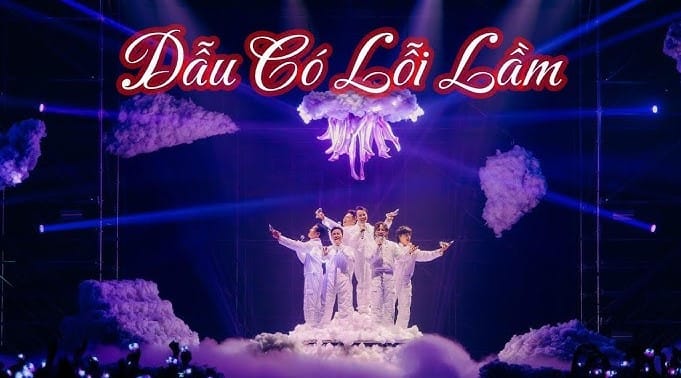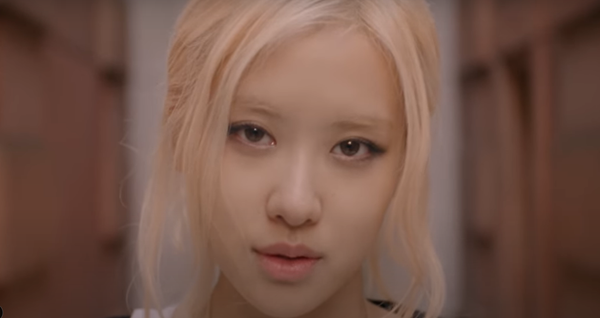"Dẫu Có Lỗi Lầm," composed by Hồ Hoài Anh, has become one of the defining ballads in Vietnamese music, weaving a narrative of love, regret, and the longing for forgiveness. This article delves into the lyrical depth of the song, its cultural significance in Vietnam, and how it has touched the hearts of many through its various renditions and interpretations.
The Lyrics: A Closer Look
The lyrics of "Dẫu Có Lỗi Lầm" are a poignant meditation on love, the pain of separation, and the eternal bond that persists despite mistakes:
Nói cho anh vì sao em bỗng ra đi
Hãy nói cho anh những điều từ lâu em giấu
Dẫu anh có lỗi lầm
Không có em, anh sống sao?
Ánh dương tàn một ngày như đã trôi xa
Và giấc mơ xưa giờ này còn đâu em hỡi?
Dẫu tha thứ lỗi lầm
Ta vẫn không còn bên nhau
Và bầu trời đêm ngàn sao toả sáng
Chứng giám cho cuộc tình anh dành cho
Em có biết rằng lòng anh mãi yêu em, không đổi thay?
Và dù ta đã xa tận chân trời nào
Lầm lỗi ngày nào làm sao lãng quên?
Em có biết rằng lòng anh mãi luôn trao em?
Huh-uh-ah-uh-ah, na-na-na-na-na-na
Huh-uh-ah-uh-ah, na-na-na-na-na-na-na (uh-ah-uh-ah)
Na-na-na (uh-ah-uh-ah), na-na-na (ooh-oh-oh)
Oh-oh-oh-oh-oh-oh
Huh-uh-ah, huh-uh-ah (hoh-hoh-hoh)
Na-ah-ah-oh-oh-oh
Huh-uh-ah, huh-uh-ah (hoh-hoh), na-ah-ah-oh-oh-oh
Huh-oh-huh-oh-huh-oh-huh, huh-huh-oh-huh (ooh-oh-oh-oh-oh-oh)
Nói cho anh, vì sao em bỗng ra đi?
Anh đã sai rất nhiều không phải kể ra khi
Lỗi lầm lớn nhất là việc để em đi
Trăn trở ngày trước em không cho anh biết
Nhưng khó để giấu khi em giữ trên mi
Có lẽ nên vậy, để ta free
Thay vì những bức ảnh mưa ngập story
Những dòng tâm trạng em không mong ai đọc
Ngoài việc muốn anh hiểu em đã lonely
Đôi lúc anh nghe như tình yêu còn đó
Nhưng thấp thoảng như gió, cứ thế khẽ bay đi
Và dẫu anh có bao lỗi lầm đi nữa
Đôi khi quá yêu em để có thể quên ngay
Nếu có thể nói, anh sẽ nói yêu em ngàn lần thôi
Nếu có thay đổi, anh chỉ muốn yêu thương này không rời
Dù rằng mình chia đôi, anh vẫn chỉ muốn thấy em vui (anh chỉ muốn thấy em vui)
Nếu một mai hai ta vẫn giữa thế gian
Hay sẽ gặp lại ở một hành tinh khác
Anh cũng sẽ chỉ muốn, vẫn muốn bên em
Và bầu trời đêm ngàn sao toả sáng
Chứng giám cho cuộc tình anh dành cho
Em có biết rằng lòng anh mãi yêu em, không đổi thay?
Và dù ta đã xa tận chân trời nào
Lầm lỗi ngày nào làm sao lãng quên?
Em có biết rằng lòng anh mãi luôn trao em?
Đêm ngàn sao toả sáng
Chứng giám cho cuộc tình anh dành cho
Em có biết rằng lòng anh mãi yêu em, không đổi thay?
Và dù ta đã xa tận chân trời nào
Lầm lỗi ngày nào làm sao lãng quên?
Em có biết rằng lòng anh mãi luôn trao em?
Đêm ngàn sao toả sáng
Dẫu khi bên nhau, anh làm cho em lo âu thì cũng đâu thể vứt hết và rời đi
Và sao không thể đối diện nhau?
Và em không thể nói một câu nào dù anh có mang lầm lỗi
Và dù ta đã xa tận chân trời nào
Nhưng khi em đi, anh vẫn sẽ luôn yêu em dẫu ai chê bai ngu si
Sâu trong con tim, anh luôn giữ trọn vẹn một lời thề rằng
"Sẽ ở đây chờ khi em về"
Em có biết rằng lòng anh mãi luôn trao em?
- Opening Reflection: The song begins with an inquiry into why the loved one left, highlighting the confusion and longing for understanding, "Nói cho anh vì sao em bỗng ra đi?" This sets the stage for a narrative of introspection and self-blame.
- Acknowledging Faults: The chorus, "Dẫu anh có lỗi lầm / Không có em, anh sống sao?" candidly admits the speaker's faults, questioning how life can go on without the loved one. It's a confession of love's depth, where the absence of the other is likened to a life without purpose.
- Imagery of Loss: The imagery used, like "Ánh dương tàn một ngày như đã trôi xa" (The sun fades as if the day has long passed), speaks to the passage of time and the fading of dreams, encapsulating the melancholy of separation.
- Unconditional Love: The repeated lines "Em có biết rằng lòng anh mãi yêu em, không đổi thay?" emphasize the unchanging nature of the speaker's love, regardless of the physical or emotional distance between them.
- The Night Sky as Witness: The night sky with its stars acts as a symbol of the vast, unending love, "Và bầu trời đêm ngàn sao toả sáng / Chứng giám cho cuộc tình anh dành cho", suggesting that love transcends human errors and time.
- Acknowledgment of Pain: The lyrics also delve into the pain of the past, "Lỗi lầm lớn nhất là việc để em đi", acknowledging that the greatest mistake was allowing the loved one to leave, reflecting on the consequences of one's actions.
Cultural Impact and Resonance
Emotional Connection: "Dẫu Có Lỗi Lầm" resonates with listeners because it captures the universal experiences of love, regret, and the desire for redemption. Its lyrics speak to anyone who has ever loved deeply and lost.
- Musical Evolution: The song has been reinterpreted by various artists, each bringing their unique emotional tone to the melody. From Bằng Kiều and Vân Quỳnh's harmonious duet to the more contemporary take by Liên Minh Phát Tài, these performances have kept the song alive across generations.
- Symbol of Vietnamese Balladry: It stands as a testament to the richness of Vietnamese ballad music, where emotion, melody, and poetry converge to tell stories of the heart.
Lyrics and Society
Relatability: The themes of forgiveness, understanding, and enduring love make the song timeless. It's not just a song but a narrative that many can see themselves in, whether they're facing the aftermath of a breakup or pondering on past mistakes.
- Therapy Through Music: For many, listening to "Dẫu Có Lỗi Lầm" is therapeutic, offering a space to process personal experiences of love and loss through the shared human condition of emotional pain and hope.
Performances and Interpretations
- Bằng Kiều and Vân Quỳnh: Their rendition is often cited for its emotional depth, with their voices complementing each other to convey the song's message of love's persistence.
- Liên Minh Phát Tài: This group's version introduces modern elements, including a rap by Binz, which adds a layer of contemporary introspection to the classic ballad, making it relevant to younger audiences.
- Solo Performances: Artists like Bùi Anh Tuấn have also performed the song solo, focusing on the raw emotion of the lyrics, showcasing personal interpretations of love and regret.
Conclusion
"Dẫu Có Lỗi Lầm" by Hồ Hoài Anh is more than a song; it's a cultural artifact that encapsulates the complexity of human emotions. Through its lyrical beauty and the various performances it has inspired, it continues to be a beacon of Vietnamese music, touching hearts with its message of love's enduring nature despite all faults and distances. As we listen to its melody, we're reminded of the power of music to heal, to reflect, and to connect us all through our shared experiences of love.







